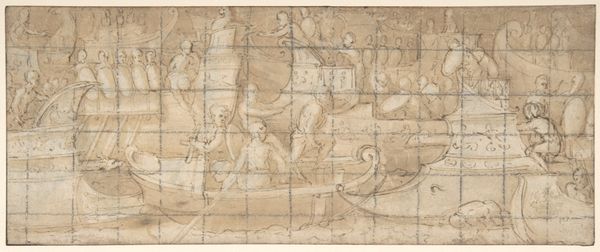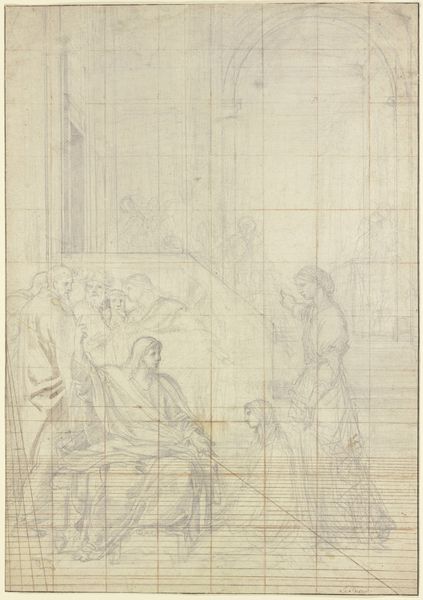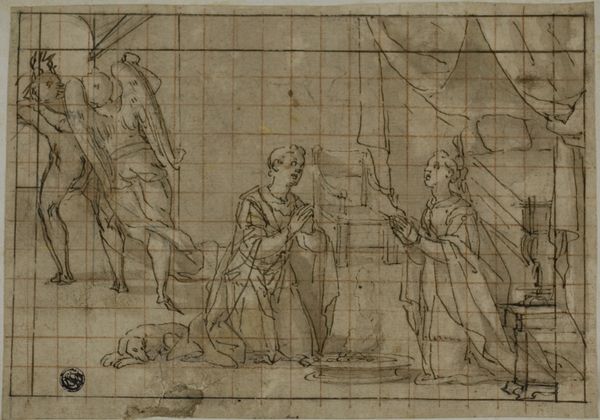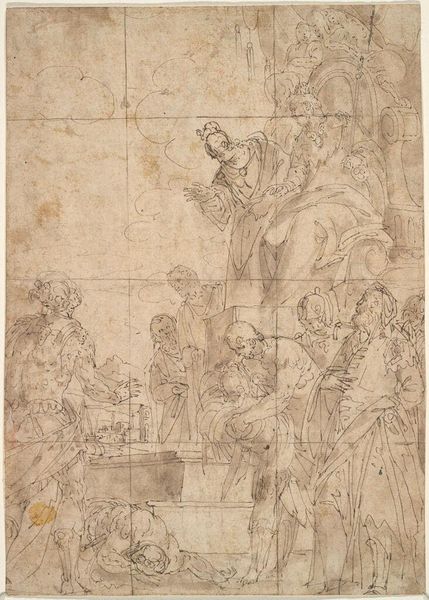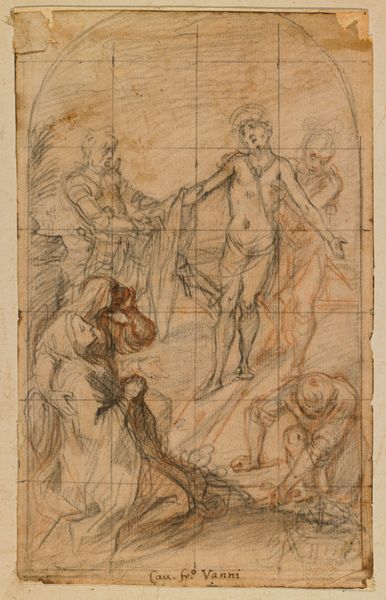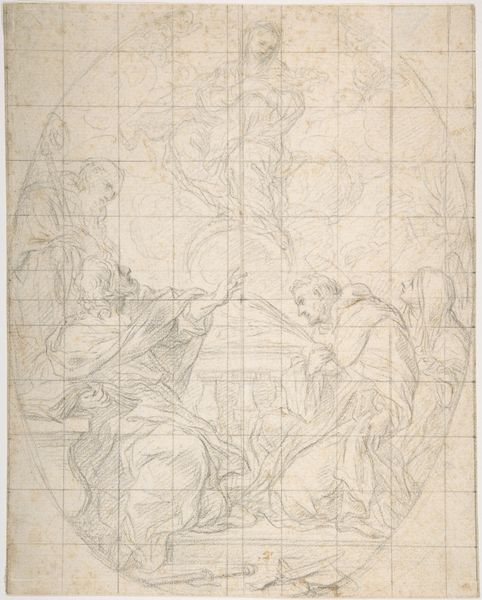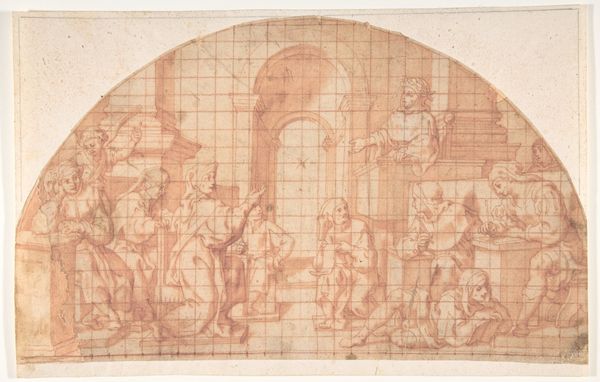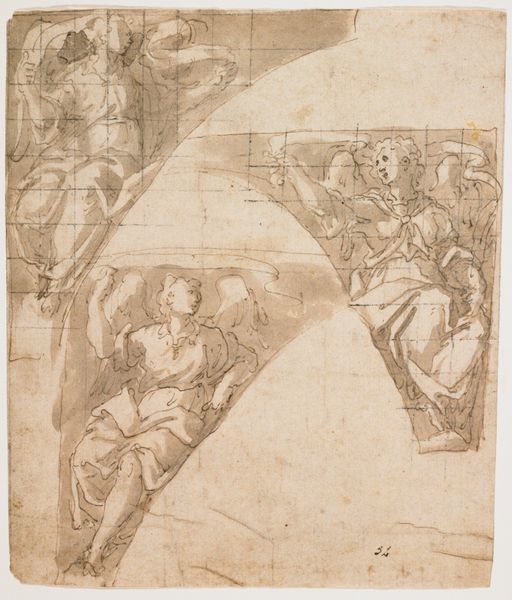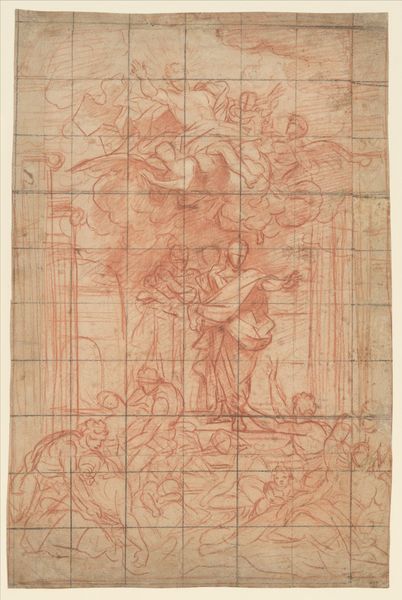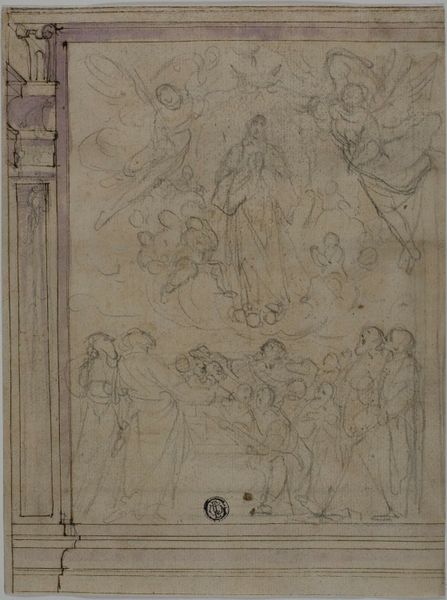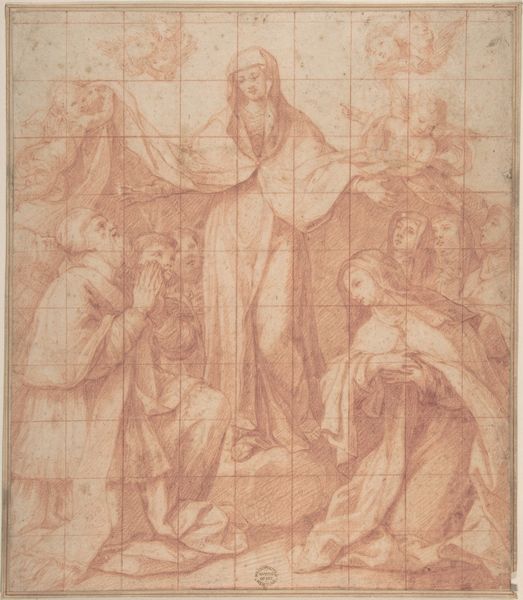
drawing, print
#
drawing
# print
#
etching
#
mannerism
#
figuration
#
history-painting
#
italian-renaissance
Dimensions: 8-11/16 x 7-1/16 in. (22.0 x 18.0 cm)
Copyright: Public Domain
Editor: This is Bernardino Poccetti's "The Assumption of the Virgin," dating from 1548 to 1612. It’s a drawing and print, specifically an etching. The red chalk gives it a warm tone, but the grid makes it feel very planned, like a study. What symbolic meaning is conveyed by the artist using a grid-based layout in preparation for "The Assumption?" Curator: The grid immediately speaks to me of preparation and transfer, doesn't it? Poccetti is meticulously mapping out a larger composition. Consider what "Assumption" itself signifies – the Virgin Mary's bodily ascent to Heaven. The earthly constraints of the grid, those firm lines, juxtapose against this weightless, miraculous event. This tension highlights the transformation, from a material to a divine state. Editor: That makes sense. It’s like he's showing us the before and after, almost as separate realms. Curator: Precisely! Note the arrangement of figures too. The earthly figures gaze upwards, bound by gravity, while the Virgin and Christ float in a liberated, airy realm. Even the etching medium is interesting here; its capacity for line allows a certain precision, echoing the sharp lines of the grid, yet also permitting ethereal, atmospheric effects which adds to the drama of the ascent. Does the symmetry strike you in any particular way? Editor: Yes, it's very balanced, almost mirroring itself across a horizontal axis. Curator: The symmetrical composition is crucial in the religious context. It's not simply about aesthetics, it evokes a sense of cosmic order and divine balance. Poccetti masterfully integrates historical and theological significance within his visual choices. Every element works to construct a layered, evocative scene. Editor: I never would have thought of the grid as a symbolic element itself. Thanks! I’m viewing this artwork in a new light. Curator: The journey through the symbolic is never complete, which is why art continues to speak across the ages. I find my insights continually expanded with further observations.
Comments
No comments
Be the first to comment and join the conversation on the ultimate creative platform.

